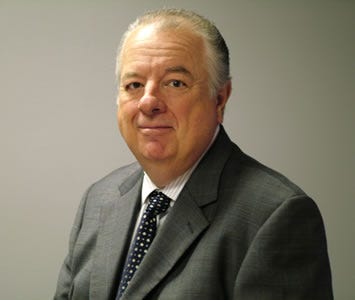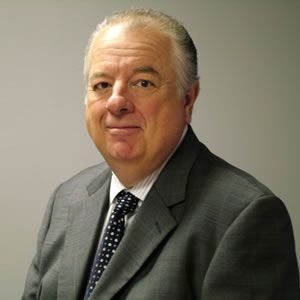Chiropractic / Medical Malpractice Causation and the Degenerative SpinePosted by drskalachiroexpert on August 30th, 2017 Proving or disproving Legal Medical Causation is based on testimony by expert witnesses regarding the “proximate” cause of negligence to a standard of reasonable medical probability. The plaintiff bears the burden of its expert being able to conclude to this standard that indeed negligence occurred and thus damage ensued. The defense expert bears the opposite burden of concluding to the same standard that there was no cause of negligence and thus no damage. Regardless of which side of the argument an expert speaks to, their conclusions must be persuasive in terms of causation. The standard of reasonable medical probability essentially means that “it is more probable than not” that a chiropractor did or did not do something negligent during the course of treating a patient that resulted or caused some degree of damage. Experts on both sides of the arguments must be able to demonstrate that the conclusions they pose as “within reasonable medical probability” have enough evidentiary weight to convince a reasonable person that their conclusions are in fact correct. The chiropractic expert will be challenged by the opposing party during deposition and/or trial in terms of the foundation used to come to their conclusions within a reasonable medical probability. The Farmer and his Degenerative Lumbar Spine In a recent case involving a 50-year-old male farmer with no prior history of back pain who injured his low back in a fall and had low back pain he initially treated with his family physician (MD) for one month. The MD took x-rays and noted age/occupation consistent signs of degeneration at L5/S1. The treatment plan of medications and exercise provided no relief. After 4 weeks of failed treatment the farmer presented to a chiropractor with his complaint of low back pain. The farmer did not inform the DC of his prior MD treatment. The DC exam revealed only loss of motion and some muscle guarding. There were no abnormal orthopedic or neurological findings. No x-rays were taken. A treatment plan of side posture manipulation of the lumbar spine was initiated with three visits per week for three weeks. The farmer was also told not to perform his usual weight lifting routine and not lift more than 10 pounds or perform any forward bending motions. During the course of this plan the farmer indicated improvement and after four weeks, the symptoms were rated as slight, there was restoration of lost ROM and the farmer was discharged from the DC’s care. Four weeks after discharge the farmer returned to his family physician and provided a history of ongoing low back pain that had become worse, indicating that the worsening was directly related to the DC’s treatment. The farmer’s condition worsened, involving leg pain with numbness and tingling, which led to a referral to a neurosurgeon. The neurosurgeon had an MRI done with revealed L5/S1 disc herniation impinging the right S1 nerve root. Laminectomy, foraminotomy L5/S1 discectomy was performed. Post surgically the farmer suffered from permanent motor loss in the right leg. The farmer sued the DC for malpractice. The plaintiff offered a chiropractic expert who testified that the DC had violated multiple standards of care. The basis of these conclusions was largely based on review of the medical records of prior MD treatment. The plaintiff also offered a neurosurgical expert, who testified that the DC treatment “significantly contributed to and likely caused the disc herniation,” basing these conclusions on professional experience and observations over the course of many years. Experts Weigh In The defense chiropractic expert testified, on review of the medical record, noting the lack of full history disclosure on the part of the farmer in regards to prior medical treatment and imaging. Discussing also the DC examination findings and the absence of any red flags during the history and exam, the DC expert concluded that the standard of care had not been violated. The DC expert, relying on training in x-ray interpretation, testified that the initial MD was correct that the degenerative changes were age and occupation consistent. The DC expert also testified that the degeneration indicated a long standing and developing disc condition at L5/S1. Finally, the DC expert noted various treatment guidelines that indicate imaging is not mandatory in the absence of red flags. The defense expert neurosurgeon testified that it was “unlikely” that the DC treatment significantly caused or worsened the farmer’s disc herniation. The neurosurgeon also testified that muscle weakness following Laminectomy, foraminotomy L5/S1 discectomy was not uncommon and cited multiple studies that listed leg muscle weakness as a risk of the surgery. It was also revealed during trial by his own testimony that despite the work and activity modifications prescribed to the farmer by the DC that he had ignored these restrictions and continued to work and lift weights without limitations. Verdict The jury unanimously found a verdict in favor of the DC, noting that he was not negligent in his care to the farmer. Comment The experts in this case for both plaintiff and defense could just as easily have been working on behalf of the opposite parties. Which party prevailed is not what is important. What is important is the variation in apparent understanding and application of simply relying on a conclusion of “reasonable medical probability” versus being able to support conclusions with a foundation, and thus convincing the jury. Suggestions This case demonstrates that proving chiropractic causation of injury is a multifaceted process. Experts on both sides made conclusions to reasonable medical certainty. The difference in who was able to better support the foundations in arriving at their conclusions was clear to the jury. My observations have led me to suggest the following to counsel in chiropractic malpractice cases:
A Doctor of Chiropractic since 1976, Dr. Skala provides consultation and expert witness services for attorneys regarding Personal Injury; Industrial Medical-Legal Cases; Standard of Care involving General Chiropractic, Manipulation Under Anesthesia (MUA), Non-Surgical Spinal Decompression, and Extracorporeal Shockwave (EWST); Chiropractic Licensure Compliance California, and Workers Compensation. Declared an expert witness by the California Workers’ Compensation Appeals Board, he is a California Qualified Medical Evaluator (QME), a Certified Industrial Disability Evaluator, and a certified AMA Impairment rater. Contact us:  Dr. Richard K. Skala, DC, IDE, FAFICC, FASBE Address: 6616 Clark Rd #330, Paradise, CA 95969, USA Phone: 510–657–6366 or 888–887–8107 Fax:510–657–3849 Like it? Share it! |


